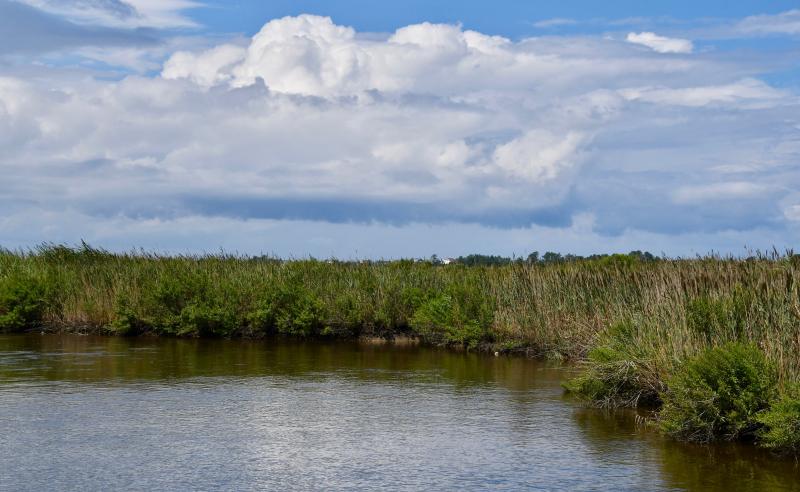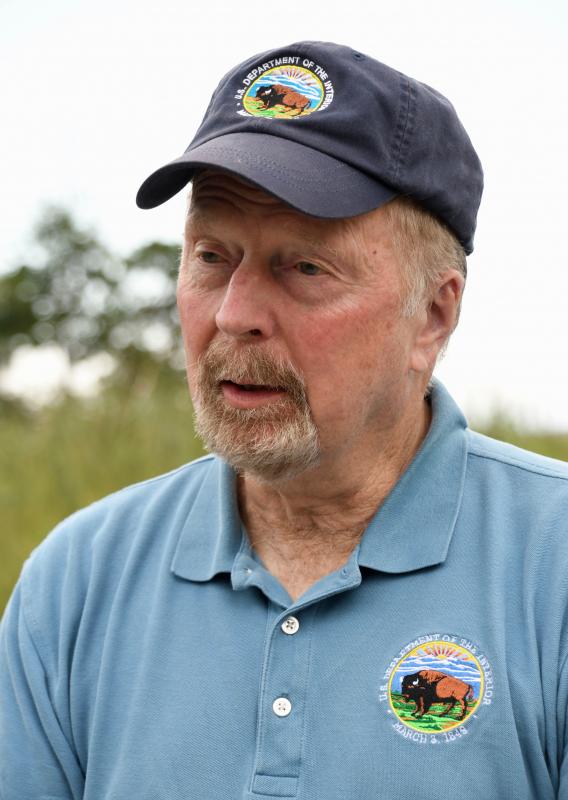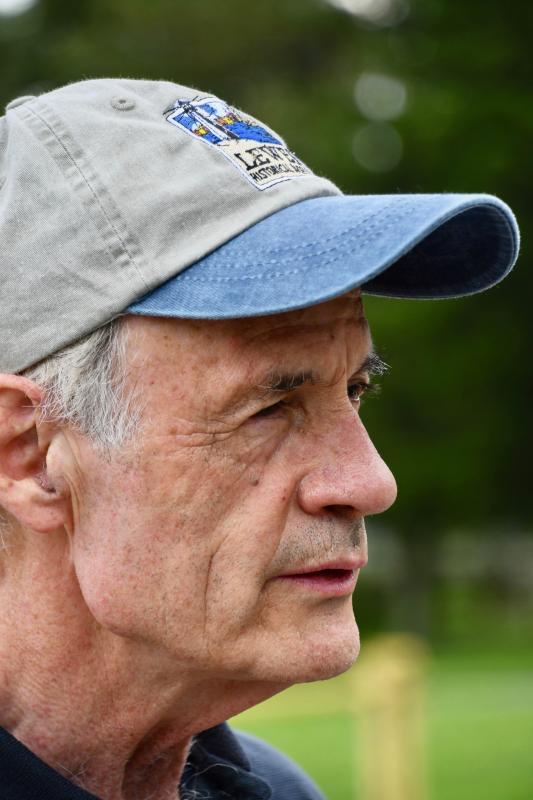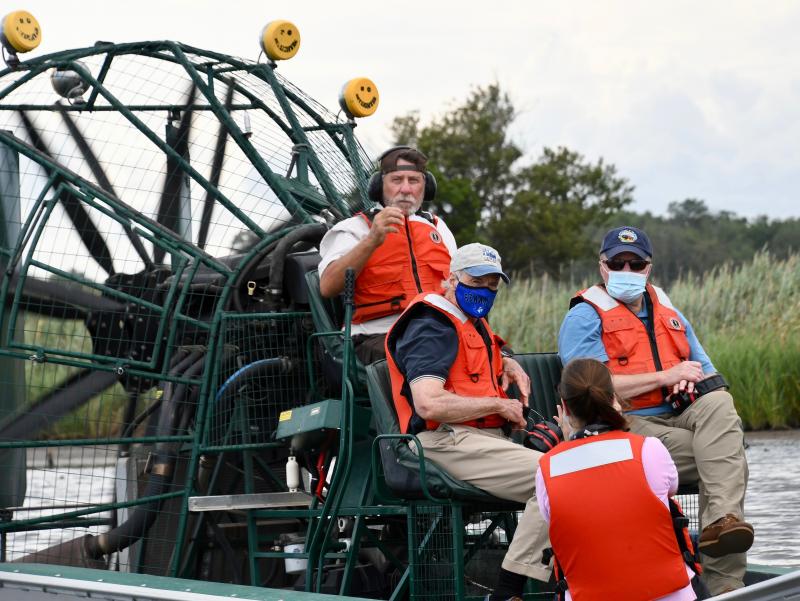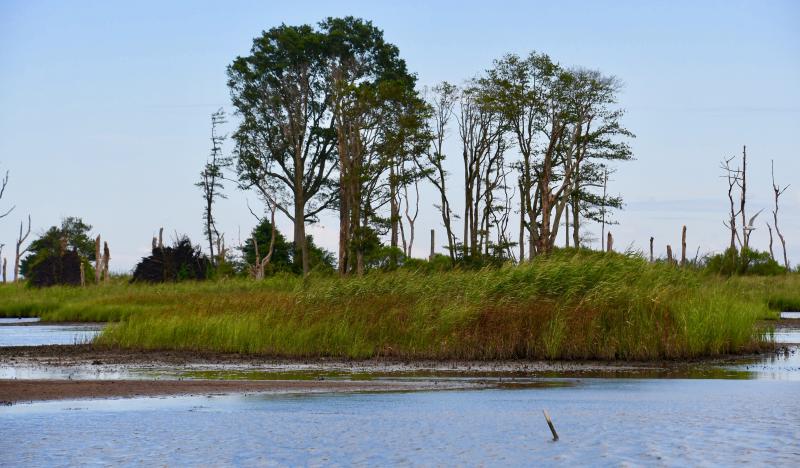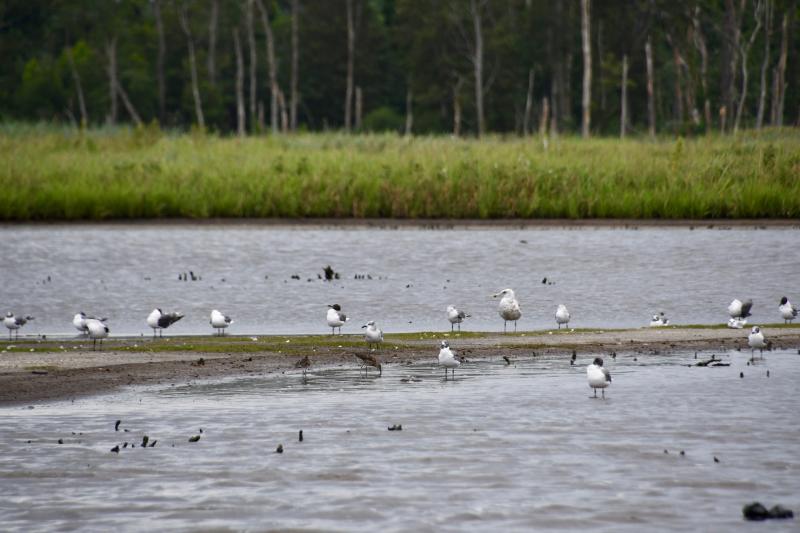Interior official takes tour of Prime Hook refuge
Marsh and beach restoration work at Prime Hook National Wildlife Refuge has gained national attention as the largest project of its kind along the East Coast, and one of the largest ever in the United States.
To put the refuge further into the national spotlight, on Aug. 14, a high-ranking U.S. Department of Interior official got an up-close tour of the more than 10,000-acre refuge thanks to the efforts of U.S. Sen. Tom Carper.
Robert Wallace, assistant secretary of Fish and Wildlife and Parks, U.S. Department of the Interior, met with refuge staff and Carper, and took an airboat ride to see how the project has impacted the refuge.
To give him a better perspective, Al Rizzo, Coastal Delaware National Wildlife Refuge complex project manager, showed Wallace before-and-after photographs of the refuge.
Wallace said the work done at the refuge is an example others can follow as best practice for marsh restoration. “There are lots of lessons to be learned here,” he said.
Wallace said Carper works tirelessly for the people of Delaware, and met with him soon after his confirmation to discuss the refuge.
Wallace, who lives in Teton Village, Wyo., is a former ranger at Grand Teton National Park and founded the park's foundation. He has served as assistant director of the National Park Service and worked on the staffs of several Republican elected officials. He was most recently a lobbyist for General Electric. He was confirmed July 28, 2019.
A $38 million project
The $38 million project rebuilt close to two miles of dunes along Fowler Beach and barrier areas behind the dunes using 1.6 million cubic yards of sand from the bottom of Delaware Bay, along with restoration of 4,000 acres of tidal marsh by re-establishing natural tidal flow.
The project, supported by federal funding for Hurricane Sandy restoration and resilience, was completed in just 18 months in 2016.
Workers dredged more than 20 miles of tidal channels, mostly following historic drainage patterns. The dredged material was sprayed onto the adjacent areas, providing on-site disposal and giving marsh elevation a boost in those areas. Nearly 60 acres in the back barrier were planted with marsh grass plugs.
In addition, seeds representing a mix of 17 species for varying conditions were spread from an airplane onto large portions of the mudflats to give revegetation a boost.
The comeback kid
Rizzo said for 20 years, more than 4,000 acres at the refuge were maintained as a freshwater habitat primarily for ducks and geese. He said by using water-control structures, freshwater impoundments were maintained to create a candy store for wildfowl and hunters. But starting in 2006, a series of storms created breaches in the protective beach barrier. Saltwater intrusion from Delaware Bay methodically killed thousands of acres of freshwater marsh and upland growth. The beach and dunes in the refuge were destroyed.
Refuge staff decided the best long-term option for sustainability was to restore the marsh’s natural hydrology and salinity to promote recolonization by native marsh grasses and restore the refuge to a salt marsh environment.
“It's revegetating really nicely, and the resources are starting to come back slowly,” Rizzo said. “Plus, we have infrastructure protection. The marsh is the comeback kid.”
There has been no flooding of Primehook Road over the past five years – the only access for residents of Primehook Beach, a small community sharing a border with the refuge and Delaware Bay.
“We wanted to turn the clock back to the way the refuge was,” Rizzo said.
Located east of Milton on Delaware Bay, along the Atlantic Flyway, Prime Hook is a key stopover site for hundreds of thousands of migratory birds, such as rufa red knots and piping plovers. The bay hosts the world’s largest population of horseshoe crabs, whose eggs sustain the migrating shorebirds. The refuge provides several recreational activities such as fishing, hiking, kayaking and canoeing, and wildlife watching.
While the refuge is open daily, the visitors’ center is closed.
